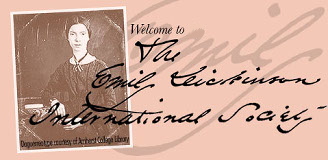You are here
Leader, Jennifer: "'Wicked as I am, I read my Bible sometimes': Emily Dickinson in Her New England Hermeneutical Community"
Submitted by RFranz on July 18, 2013 - 4:04pm
“Wicked as I am, I read my Bible sometimes”:
Emily Dickinson in Her New England Hermeneutical Community
Jennifer Leader, Mt. San Antonio College
The War Between the States was not the only American civil conflict that Emily Dickinson was privy to: in 1848 Horace Bushnell ignited the famed “paper wars” over his assertions that the language of Scripture was meant to be understood as living metaphor and that theology was more akin to poetry than science. In the following four years, theologians furiously debated whether or not interpretations of the Bible’s figurative language were stable and could be logically and systematically categorized into doctrine. Read in the light of the warring interpretive communities in and around the theological hotbed that was Amherst and South Hadley, Dickinson’s own meta-commentary on the Bible is not at a far remove from E. A. Park’s and Bushnell’s Edwardsean penchant to trust the individual believer’s multiple interpretations of dynamic Scriptural metaphor. While “Too much” of the Baconian “Proof affronts Belief” for the poet, she also asserts that where Scriptural language might not be ‘literally’ true, it is not necessarily ‘un’ true: “a Book is only the Heart’s Portrait—every page a Pulse—“ she writes of the Bible to Elizabeth Holland (Fr1240, L794).
Dickinson’s living and breathing King James “stills, incites, infatuates—blesses and blames” because, unlike Emerson’s Transcendental nature or the Princeton Reformed propositional theology of her friend the Rev. Charles Wadsworth, it is best read as an ambulatory “Portrait”: unfixed, a-rational and entirely Other (L965).
|
